The technical progress of the maximum eased the life of modern man. There, where were the factories and, now, for the most part, rise and leisure centers, movie theaters and beauty salons. The process of production of goods almost entirely ituzaingó and computerized. In addition to that, the production range gradually gives way to the sphere of the services. The man meanwhile, the clock is located in the office, trying to invent another effective way for sales, marketing or another variant of the extraction of money from foreign portfolios. Then he gets into his car and with comfort, in a license, the chair is going home. Of course, we painted the ideal of the image, not to mention about the traffic jams on the road, sweltering offices, the public transportation, which is a large part of the population, and so on, But who do not want to live comfortably?
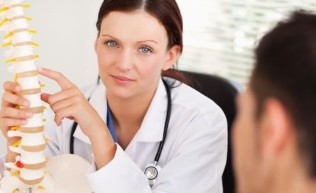
However, many of if the use of such convenience? Our century has already declared the century of physical inactivity, which involves a lot of unpleasant consequences. Cardiovascular disease, massive obesity, hypertensive disease, lumbago, and other diseases are included in the game with the private vehicle, a chair and a cabinet. But the most common form of the disease, that we make payments for the sedentary lifestyle, is the osteochondrosis. For him this is this article.
The osteochondrosis
What is osteochondrosis? Let's look at the mechanism of development and the types of the disease When we hear about osteochondrosis, in the first place to think of the pain in the back and in the muscles. However, by itself, the disease directly muscular apparatus does not affect. The pathological changes occur in the cartilage, which exist in all the joints of our body.
The cartilage fabric carries a protective and cushioning function. In addition, it has highlighted the special secret, which lubricates the joints of the surface, reducing the friction in the movements of the bones. But in some cases the cartilage fabric wear (degenerate). In addition, the metabolism of the violations, the lack of certain vitamins and trace elements, as well as hereditary disorders of metabolism errors breaks the power of cartilage tissue, and loses its strength and elasticity. This state bears the name of the dystrophy.
Thus, the osteochondrosis is atrophic changes in the cartilage tissue. In theory, the pathological changes that can affect any joint. But, in practice, the osteochondrosis typically infects our spine. And depending on what part of the spine is located the process, it is distinguished lumbar, thoracic and cervical osteochondrosis.
Imagine our spinal column. It is composed by the bones of the entities of the vertebrae. Each vrtebra has a body and multiple appendices. Between the body and the spindles there is a hole through which passes the pull of the spinal cord. The vertebrae are located in such a way that the holes form a hollow tube – medullary canal. The body of the vertebrae are placed one above the other, and between them is a layer of cartilage – the intervertebral cartilage discs. They are a function of the shock absorbers, softening the blows and reduce the load on the spine when walking or other movements of the person. The vertebrae have a similar structure, and of different sizes. With the exception of several fused vertebrae residual limb-coccygeal division and seven elements of the cervical spine,which differ in their structure.
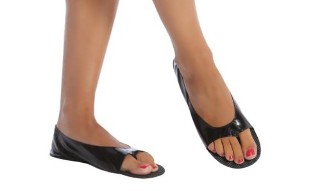
The spine has four divisions:
- neck (1 to 7 vertebrae);
- chest (8 to 12);
- the lumbar (13, 18);
- the sacrum and the coccyx (the department consists of stationary of the bones, and therefore not involved in the process).
In consequence, the osteochondrosis of the spine is divided into three main types, which we have outlined above.
The types of degenerative disc disease
Most commonly found in the osteochondrosis cervical, as well as the cervical vertebrae have a different structure and muscle, the apparatus is compatible with the spinal column, this part is developed quite badly. With the time, in the cervical spine or in any other department of the spinal disc of hyaline cartilage begins to compact, the loss of its elasticity, and the vertebrae are closer to each other. The result of this can be the crushing of the nerve fiber or blood vessel. As a consequence of this altered innervation and blood flow to the relevant organs, giving rise to problems in their work, the reduction of motor activity, the appearance of pain syndrome. In addition, the displacement of the vertebrae, their stems can irritate the muscle tissue in this area, which leads to muscle spasms of the muscles. And because in the background of the disease, muscle apparatus, and so there is that to perform a double work, by compensating the reduction of the damping function of the column and the change of position of the vertebral bodies.
Along with the neck band, it is quite common to also back-kresttsoviy the osteochondrosis, which is developed in the regular fund of the high pressures in the back, lifting weights and so on.
Chest of osteochondrosis develops less frequently than in the first two varieties of the disease. In addition, their diagnosis is difficult, since the disease has a number of effects non-specific symptoms similar to the symptoms of angina. Noteworthy is the fact that, by itself, the body of the vertebrae, cartilage, nerve fibers, the brain and the spinal cord does not include pain receptors and, therefore, the pain from osteochondrosis is derived from the nature. The osteochondrosis is considered to be also some varieties of Osteochondropathy, that have more of other etiology. About them, we will mention in our article.
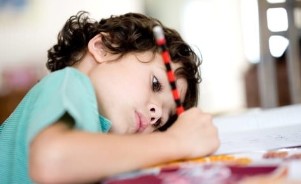
The cause of the disease
With the reason for the development of degenerative disc disease – physical inactivity – began to tell your story. As it is said, the pace of life! As well as the lack of enough physical activity can influence the state of our joints and the spine? Everything that our money is natural corset muscle that supports the spine and helps to perform its tasks properly. However, in the absence of muscle exercise, the apparatus is weakened, the spine loses support, the greater burden falls on the intervertebral cartilage, disks, and that, with time, degenerative change.
However, the excess physical load, for example, that of professional athletes, it can also lead to degeneration and dystrophy of the cartilage and therefore cause the development of degenerative disc disease and other Osteochondropathy. Accordingly, in this regard, it is necessary to adhere to the golden mean, in order to avoid health problems.
An important role in the development of the degenerative disc disease plays a style of life of modern man. In addition to the lack of sufficient motor activity, may include a poor diet, lack of vitamins and minerals in the diet, the consumption of tobacco, consumption of alcohol, the use in daily life and in the workplace spot of the furniture, sleep on the soft mattress, habitual incorrect posture, driving a car, working conditions and asíd.
In the complex of all of this, inevitably, leads to the violation of the nutrition of the cartilage, the loss of its quality characteristics (strength, firmness, elasticity) and the development of degenerative disc disease. The flat foot is another quite frequent cause of degenerative disc disease. Apparently, what is the relationship of the deformation of the arch of the foot you may have pain in the lower back, and even more in the neck? It is more direct. The person is organized in such a way that it is able to allocate correctly the weight of the whole body when walking. In the process of evolution of the bones of the foot are formed two joint – longitudinal and transverse. Thanks to this structure, together with the appearance of the curves physiological of the spine, it was possible to bipedalism human. If the arch of the foot for one reason or another uploshchaetsya, all the load is placed on the spine. And this and the pain in the back, and the limitation of the amount of movement, and even migraines.
In recent years, many scientists are inclined to which, to a great extent to the development of osteochondrosis affects the inheritance.
The symptoms of degenerative disc disease
How to recognize the osteochondrosis? The symptoms of degenerative disc disease is very varied. Although most of us only know about the main symptoms of this disease are: muscle aches and pains and difficulty in movement. However, not in vain is quite a detailed talk about the mechanism of development of degenerative disc disease. As the signs of this disease are directly related to the processes that occur during the development of the pathology is.
So, as we already know, all of the symptoms of degenerative disc disease are related to the compression of the vessels and the nerve fibres, with the consequent violation of the innervation and of the power of the respective muscles, organs and tissues. So, the changes will apply to not only the muscular device. Thus, the symptoms of degenerative disc disease, cervical and frequent headaches, and even dizziness, along with pain in the muscles of the neck and the shoulder girdle.
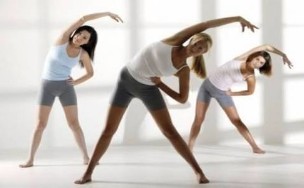
Headache when osteochondrosis cervical has a vascular origin: the blood flow in the tissues of the brain ruptures and the nerve cells suffer hypoxia. This is related to, and the vertigo, which at times can reach unconscious state. Circulatory disorders, related with the band to the neck of the osteochondrosis, in rare cases, it can also lead to the loss of hearing of the patient, violation of coordination of movements (unstable gait), dysphonia of the voice. Snoring may indicate the development of degenerative disc disease.
If dystrophic changes affect the spinal discs of breastfeeding and the division of thorns is the osteochondrosis is manifested by pains in the back of the corresponding location, the accession of asmtico component, the heart of the pain. Sometimes, the patient may experience shortness of breath and arrhythmia. Often, patients will mistake the emergence of cardialgia with ischemic heart disease (thoracic toad). But this type of pain heart however, there are a number of distinctive features. Subjectively they may be viewed as "the stake in the chest. Reception of nitrates, and other antianginal media does not relieve pain. If the angina in the man increases the anxiety, and even appears the fear of death. Chest of osteochondrosis does not have those symptoms. Sometimes cardialgia, caused by osteochondrosis of the spine can last several days, however, does not put in danger the life of the person. Ischemic pain in the heart that short, but in case of non-compliance can result in the development of a myocardial infarction, and out of time rendered medical attention to the attack of angina may be the cause of the death.
The osteochondrosis lumbar-part sacrum of the spine is characterized by pain in the lower part of the back. The pain can radiate into the lower extremities. The patient may also experience difficulty walking, which is associated with a decrease in the tone of innervated the data of a segment of the spinal cord from the muscles. The pain have a shot in the nature. Sometimes the patient may be difficult to straighten the back, get out of bed, or to change the position of the body. The reflexes of the lower extremities to the osteochondrosis lumbar-part sacred reduced.
Osteochondropathy
We have already touched on in this article a problem of this type, as children of the osteochondrosis. Symptoms and treatment of this pathology is of several differ from those of adults. This is due, primarily, to the concept of the child osteochondrosis involves various Osteochondropathy. The most common are:
- the disease of keller,
- the disease of Osgood–Schlatter disease,
- the illness of The president of the-May,
- the disease Legge-calvet-peeters.
The disease of keller is found in children between the ages of 8 and 12 years of age, but can also develop in adulthood, something that happens a lot less. This condition is affects the spongy substance of the bones of the foot. And there are two main types of this disease. In the disease of keller first type is affected navicular bone. If the disease is of the second type, then the pathological changes affecting the bones of the metatarsus.
The disease Schlatter's disease affects the bone of the tibia in the area below the kneecap (patella) develops the age group of 11 to 14 years. The scars are the factors of sports activities (football, basketball, running, jumping, etc). Also the appearance of a disease can be related to the discrepancy of the speed of growth of the bones of the teenager and the development of a cartilage tissue.
The illness of The president of the-May, or curvature of the spine, is one of the varieties of breastfeeding and of the osteochondrosis. Develops this pathology is, as a general rule, children and adolescents between 8 and 14 years, however, for a long time, neither the child nor his parents may not notice any kind of serious anomalies. Visible symptom is the violation of the child's pose.
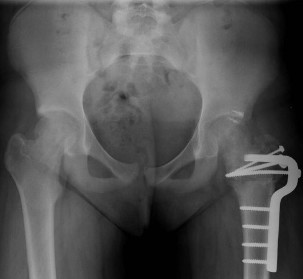
The disease of Legg-Calv-Perthes is a disease is that it affects the thigh and, in particular, of his crown, in the area that is the cartilage fabric. Often the disease affects children from 4 to 14 years), and manifests to them the limp. When this pathology is produced necrotic changes in the tissues of the femoral head, which are non-infectious (aseptic) nature. The most common reason of the disease is hereditary predisposition. In the early stages the child begins to limp. Later, the child has pain in the hip area and the knee, especially when driving.
The prevention of the degenerative disc disease in infancy is moderate physical load, wear comfortable footwear, correction, and maintenance of the correct posture, for which there are a set of exercises. The osteochondrosis and pregnancy without a Doubt, if the woman suffers from osteochondrosis, is the planning of the pregnancy, you must beforehand make the treatment of this disease. Although ultimately cure this disease can not, as well as to fully restore the cartilage can not.
Along with the degree of motor activity, moderation and balance in the meal will help to bring to normal your weight and then keep it under control. Normal weight – the key to your well-being and the health of your back. And a healthy back that is strong and restful sleep, and the lack of headaches, and in the prevention of other diseases of the locomotor system. Love yourself, pay more attention and take care of your health!































